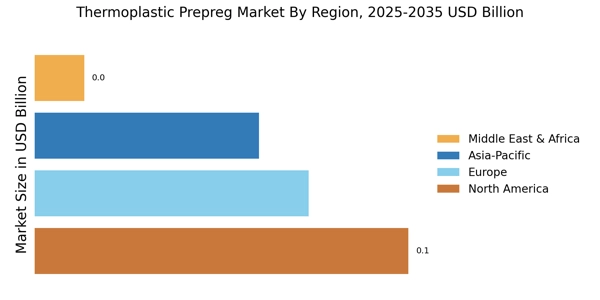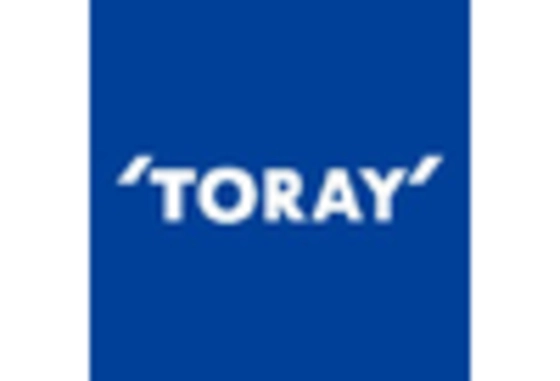Increased Focus on Sustainability
The growing emphasis on sustainability is driving changes across multiple industries, including the Thermoplastic Prepreg Market. Companies are increasingly prioritizing eco-friendly materials and processes, leading to a rise in the adoption of thermoplastic prepregs, which are often more recyclable than traditional thermoset composites. This shift aligns with global sustainability goals and consumer preferences for greener products. The market for sustainable materials is projected to expand significantly, with thermoplastic prepregs playing a crucial role in this transition. As industries seek to reduce their carbon footprint, the demand for thermoplastic prepregs is expected to increase, reflecting a broader commitment to environmental responsibility.
Rising Demand in Aerospace Sector
The aerospace sector is experiencing a notable increase in demand for lightweight and high-performance materials, which positions the Thermoplastic Prepreg Market favorably. The need for fuel-efficient aircraft has led manufacturers to seek materials that reduce weight without compromising strength. Thermoplastic prepregs, known for their excellent mechanical properties and thermal stability, are increasingly being adopted in aircraft components. According to recent data, the aerospace industry is projected to grow at a compound annual growth rate of approximately 4.5% over the next few years, further driving the demand for thermoplastic prepregs. This trend indicates a robust market potential for thermoplastic prepregs, as they align with the industry's focus on innovation and efficiency.
Automotive Industry Transformation
The automotive industry is undergoing a significant transformation, with a shift towards lightweight materials to enhance fuel efficiency and reduce emissions. The Thermoplastic Prepreg Market is poised to benefit from this trend, as manufacturers increasingly incorporate thermoplastic prepregs into vehicle designs. The global automotive sector is expected to grow at a rate of around 3% annually, with a substantial portion of this growth attributed to the adoption of advanced materials. Thermoplastic prepregs offer advantages such as improved durability and recyclability, making them an attractive option for automotive applications. This shift not only supports sustainability goals but also enhances the overall performance of vehicles, thereby driving the demand for thermoplastic prepregs.
Growth in Renewable Energy Applications
The renewable energy sector is witnessing a surge in the use of advanced materials, particularly in wind turbine manufacturing. The Thermoplastic Prepreg Market is likely to see increased demand as manufacturers seek materials that can withstand harsh environmental conditions while maintaining structural integrity. Wind energy is projected to grow significantly, with an estimated increase of over 20% in installed capacity in the coming years. Thermoplastic prepregs, with their superior mechanical properties and resistance to environmental degradation, are well-suited for this application. This trend suggests a promising future for thermoplastic prepregs in the renewable energy sector, as they contribute to the efficiency and longevity of wind energy systems.
Advancements in Manufacturing Technologies
Recent advancements in manufacturing technologies are transforming the production processes within the Thermoplastic Prepreg Market. Innovations such as automated fiber placement and advanced curing techniques are enhancing the efficiency and scalability of thermoplastic prepreg production. These technologies not only reduce production costs but also improve the quality and consistency of the final products. As manufacturers adopt these advanced methods, the market is likely to experience accelerated growth. The ability to produce complex geometries and large-scale components with thermoplastic prepregs is becoming increasingly feasible, which may attract new applications across various industries, including aerospace and automotive.


















Leave a Comment